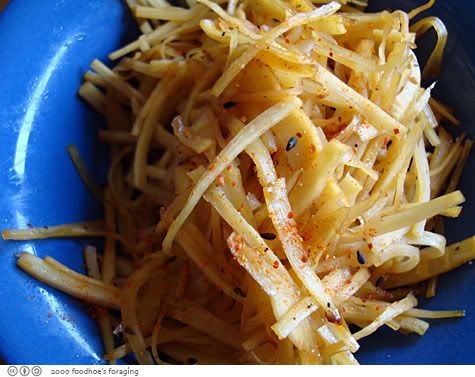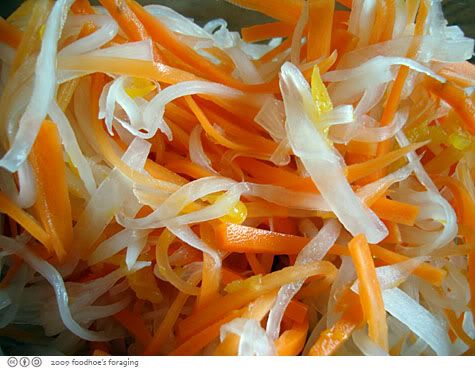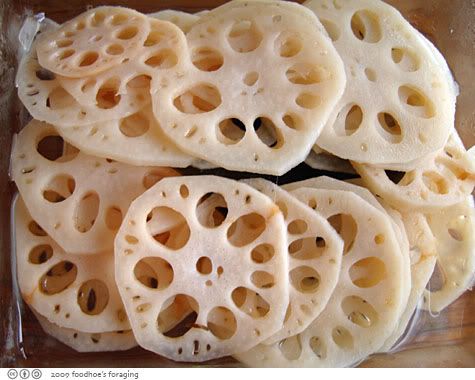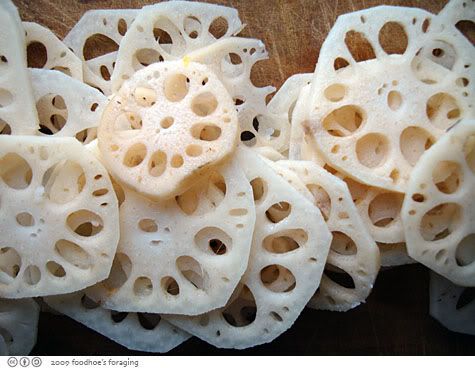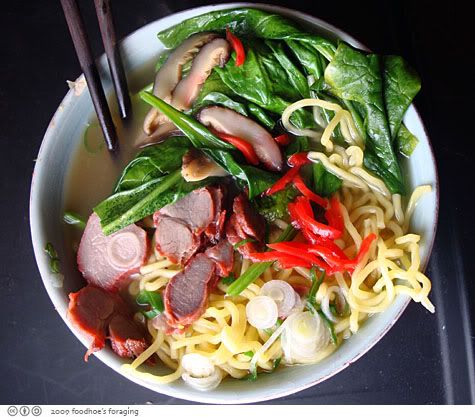
from David Chang's Momofuku
Makes 5 quarts
Two 3 by 6 inch pieces of Kombu
6 quarts water
2 cups dried shiitakes, rinsed
4 pounds chicken, either a whole bird or legs
5 pounds meaty pork bones
1 pound smoky bacon
1 bunch scallions
1 medium onion, cut in half
2 large carrots, peeled and roughly chopped
1. Rinse the konbu under running water, then combine it with the water in an 8 quart stockpot. Bring the water to a simmer over high heat and turn off the heat. Let steep for ten minutes.
2. Remove the kombu from the pot and add the shiitake mushrooms. Turn the heat back up to high and bring the water to a boil, then turn the heat down so the liquid simmers gently. Simmer for 30 minutes, until the mushrooms are plumped and rehydrated and have lent the broth their color and aroma.
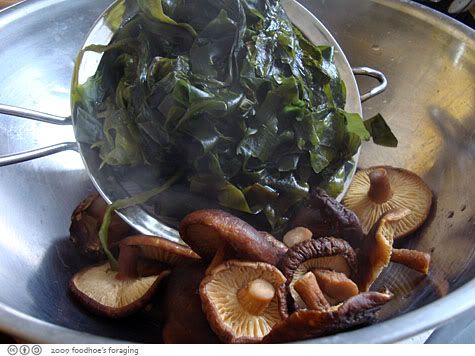
3. Heat the oven to 400F
4. Remove the mushrooms from the pot with a spider or slotted spoon. Add the chicken to the pot. Keep the liquid at a gentle simmer. Skim and discard any froth, foam or fat that rises to the surface of the broth with the chicken is simmering and replenish the water as necessary to keep the chicken covered. After about 1 hour, test the chicken; the meat should pull away from the bones easily. If it doesn’t, simmer until that’s the case and then remove the chicken from the pot with a spider or slotted spoon.5. While the chicken is simmering, put the pork bones on a baking sheet or in a roasting pan and slide them into the oven to brown for an hour; turn them over after about 30 minutes to ensure even browning.
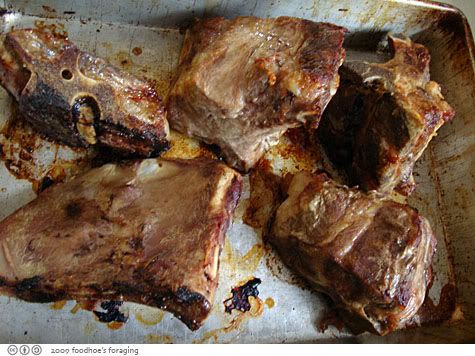
6. Remove the chicken from the pot and add the roasted bones to the broth, along with the bacon. Adjust the heat as necessary to keep the broth at a steady simmer; skim the scum and replenish the water as needed. After 45 minutes, fish out the bacon and discard it. Then gently simmer the pork bones for 6 or 7 hours—as much time as your schedule allows. Stop adding water to replenish the pot after hour 5 or so.
7. Add the scallions, onion and carrots to the pot and simmer for the final 45 minutes.
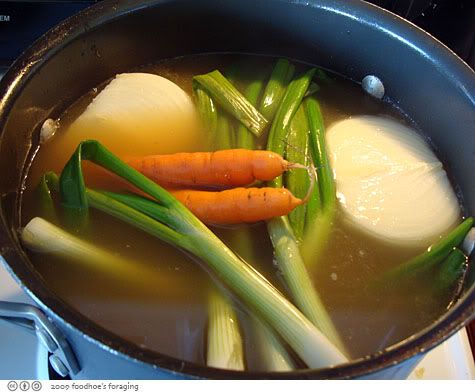
8. Remove and discard the spent bones and vegetables. Strain the broth. You can use the broth at this point or if you are making it in advance and want to save on storage space, you can do what we do: return it to the pot, and reduce it by half over high heat, then portion out the concentrated broth into containers. It keeps for a couple of days in the refrigerator and up to a few months in the freezer. When you want to use it, dilute it with an equal measure of water and reheat it on the stove.
9. Finish the broth by seasoning it to taste with salt, soy sauce and mirin. Only your taste buds can guide you as to the right amount of seasoning. Taste it and get it right. I like it so it's not quite too salty but almost. Very seasoned. Underseasoned broth is a crime.

